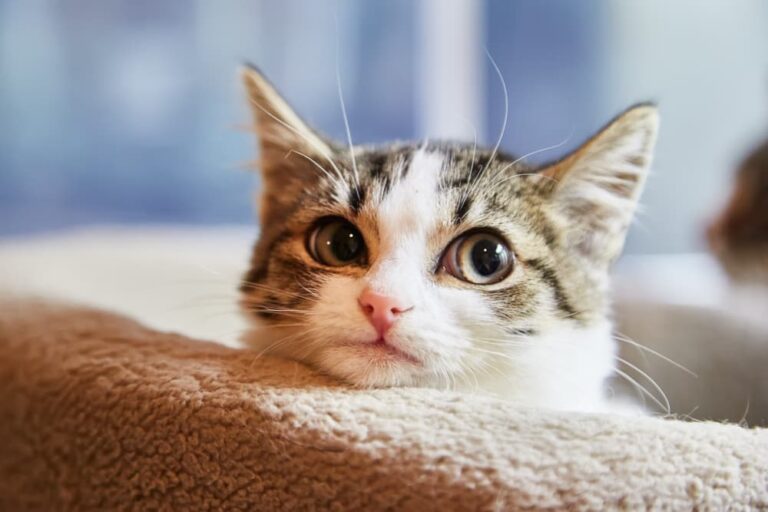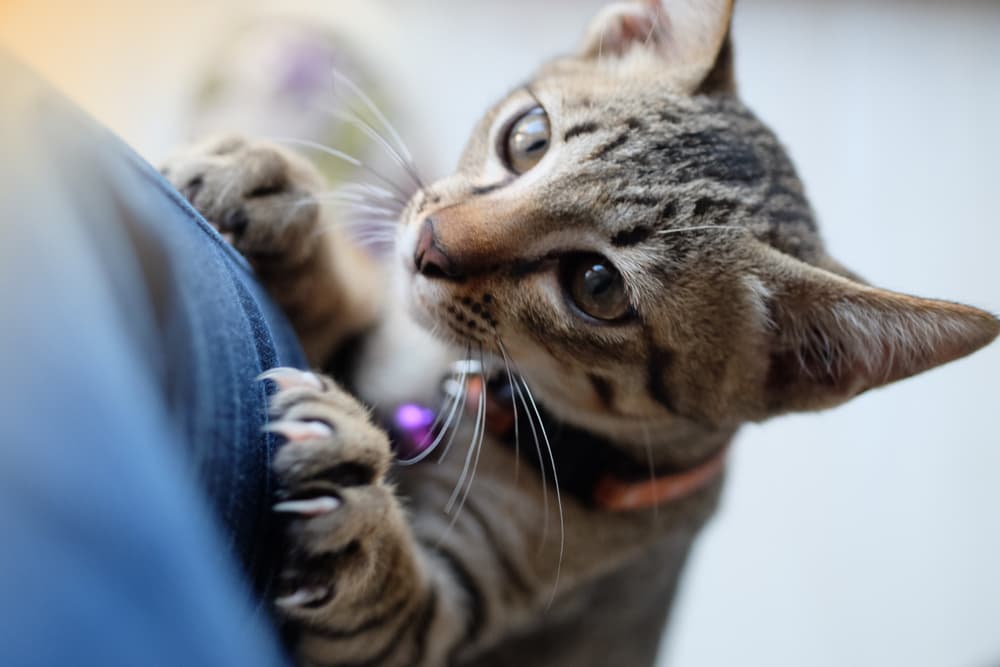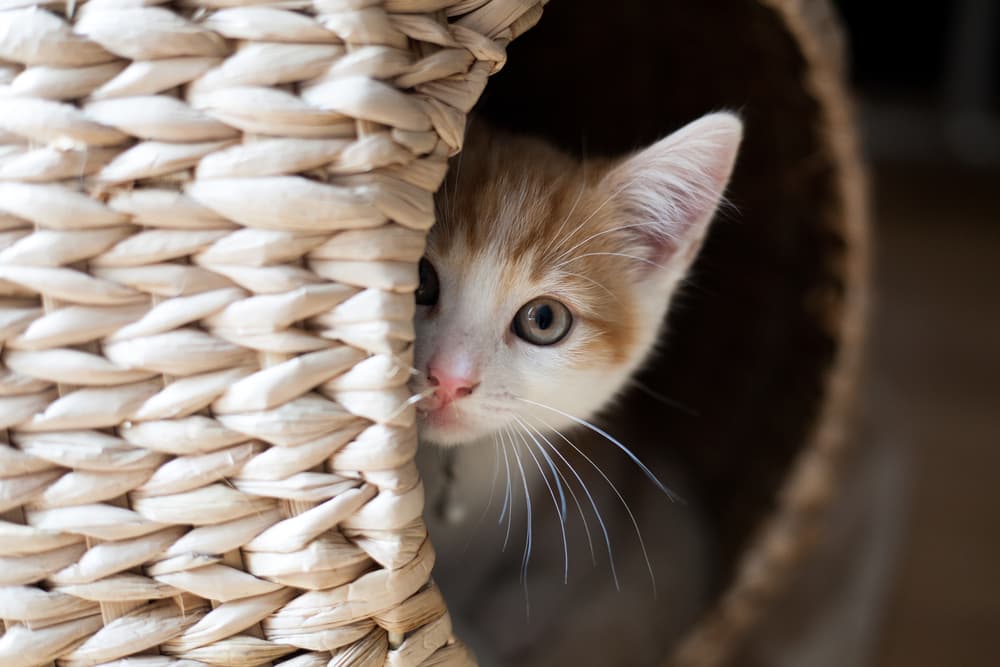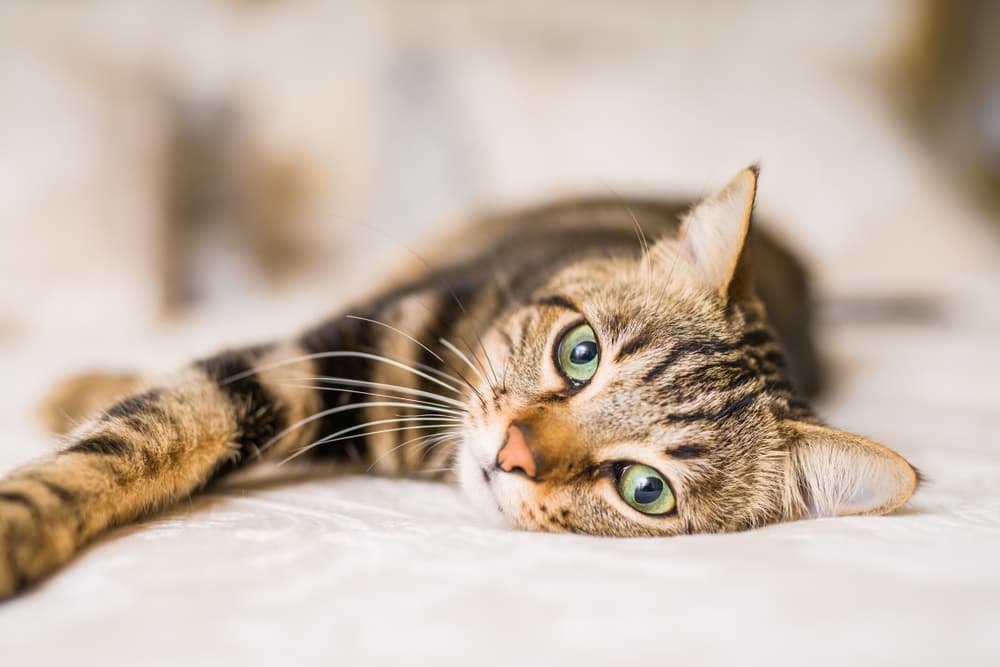Why Is My Cat So Clingy?

Cats have a reputation as introverted, independent creatures who approach life on their own terms. If you’ve lived with cats, however, you know that their personalities can range from aloof to affectionate, and everything in between. In fact, in an Oregon State University (OSU) study of attachment styles in cats, researchers found that our felines form similar attachments to us—and in strikingly similar percentages—as children and dogs do (1).
Shows of affection are a great thing, but a cat demanding attention on a regular basis could be symptomatic of anxiety, stress, fear, or an underlying medical problem—all of which merit a call to your veterinarian for further consideration and treatment. We asked cat experts to help explain the difference between an overly affectionate cat and one who’s become too dependent on you, what may be causing the clinginess, and ways to address the behavior.
Can Cats Be Obsessed With Their Owners?

If you sometimes feel as if your pet is your shadow, it may not be a sign of obsession as much as it is your cat’s need to feel safe and secure.
This was one of the findings of the OSU study, in which researchers had each cat spend two minutes in a room with their human, followed by two minutes alone, then two minutes back together as a reunited team. About 65 percent of the kittens studied were labeled securely attached based on their ability to balance their attention between their human and the room. However, the rest of the cats displayed more signs of stress and either avoided their humans or clung to them—classic signs of insecure attachment.

Cats differ in how they show affection, says Pam Johnson-Bennett, certified cat behavior consultant, best-selling author, and owner of Nashville-based Cat Behavior Associates. “Some cats enjoy being physically close and display obvious signs of attachment, such as licking, cuddling, rubbing against their human, bunting, or curling up in a warm and cozy lap. Some cats show attachment and affection by being near their human or at least being in the same room. They may not feel the need to be in physical contact with a family member, but enjoy the companionship and connection.”
If your cat wants your attention, that isn’t necessarily a problem. But if your cat needs your attention because they’ve become overly dependent on you, that could be a problem. “Some cats can show a concerning amount of attachment to their human and, as a result, experience separation anxiety when that person isn’t present,” says Bennett.
Why Is My Cat So Clingy?

There really aren’t all that many studies on clinginess and separation anxiety in felines, but our experts offer a few thoughts on what may be causing your cat to cling.
An Underlying Illness

“Cats can be more clingy when underlying medical conditions are making them feel ill and they seek out comfort,” says Dr. Sasha Gibbons, an associate veterinarian at Just Cats Veterinary Hospital in Stamford, Connecticut.
While a kitty curled up by your feet for long stretches of time may just be enjoying your company, such behavior might also be due to lethargy, which could be a sign of any number of illnesses, including hypertrophic cardiomyopathy, plant poisoning, and anemia.
Changes in the Home Environment

“Changes in the home environment or confusing changes to the family may lead a cat to attach too much to one person,” says Bennett. Cats are super sensitive to change, so what may seem insignificant to you can be a big deal for your cat. Even a litter box that’s been moved from its usual spot can cause stress in cats.
According to Bennet, other potential factors to consider include a schedule or relationship change, a new baby or pet in the home, or disruption affecting the person who typically responds to the cat’s solicitations and requests.
If that response pattern changes—say, if you suddenly return to a job outside the home after spending lots of time with your pet during the pandemic—it may be confusing and unsettling to your cat.
Stress and Trauma

Kittens who were orphaned, weaned, or separated from littermates too early are at a higher risk of displaying clinginess, says Bennett. Other causes of cat anxiety include stress or fear resulting from former abuse or a lack of proper socialization during kittenhood, especially during the first two to three months of life.
More recent or immediate trauma may also be the culprit. “Cats can become clingy or needier for emotional reasons, such as if they are afraid of an animal outside, a storm, construction, or had a recent traumatic event,” offers Gibbons. Fireworks displays are notorious for sending a cat’s anxiety levels skyrocketing, so to speak.
Not Enough Enrichment

In a study published in the scientific journal PLoS One, researchers discovered that cats without access to toys often displayed behavior consistent with separation anxiety (2). Toys help cats express their hunting instinct, which is an important part of who they are.
Toys alone probably won’t fix an insecure cat, though. Being left alone too often may cause a cat to become too attached to a human and feel secure only when that person is around, says Bennett.
Too Many Cats in the Home

“In a multi-pet environment where a cat doesn’t feel safe or secure, that may cause them to find comfort only when a pet parent or family member is nearby,” says Bennett.
This is one of the reasons why experts recommend that pet parents provide ample hiding spaces, separate litter boxes, and food dishes for homes with more than one cat. If basic needs for food and shelter are met, cats are more likely to feel secure.
Clingy Cat: Is It Normal?

There’s a difference between an occasionally demanding cat and outright dependence. One way to tell the difference is to observe how your cat acts when you’re not in sight. “There are a wide variety of ways cats and humans share a close bond, and it stays within the guidelines of being healthy if the cat can still display normal, secure behavior when the human family isn’t present or in sight,” Bennett says.
Also, pay attention to other potential signs of stress and illness. “Look for changes in litter box habits, changes in appetite, activity level, vocalization, sleeping patterns, and grooming. Look at the cat physically for signs of over-grooming, or anything else that seems out of the ordinary,” offers Bennett.
Another warning sign that something is amiss is if a normally secure cat is suddenly clingy, says Gibbons. “Other symptoms that can go along with underlying illness include a change in appetite, change in normal activities, an increase in the frequency of vomiting or diarrhea, change in breathing, or excessive thirst.”
How to Deal With A Clingy Cat

Given that over-dependence on a human can lead to depression, separation anxiety, and illness, it’s essential to understand the underlying causes and find ways to remedy the behavior. “A cat can be very affectionate and connected with their human, but if they cross over into being clingy, then it’s important for the family to look at the overall picture and see what can be done to create more confidence and security,” says Bennett.
Here are a few guidelines to help you improve life for your needy cat and your family.
First Things First: Talk with Your Veterinarian

“If it is a medical issue, often addressing the underlying cause will help. If it is a behavioral issue, veterinarians often have many suggestions on how to keep your kitties calm,” says Gibbons. Ask your veterinarian if it would be beneficial to work with a veterinary behaviorist or certified cat behavior consultant.
Why is My Cat Being Clingy? Study Your Own Behavior
Despite your best intentions, there’s a chance you could be contributing to your cat’s clinginess inadvertently by constantly rewarding their behavior. “Cats may find the only relief comes from being in physical contact with their human, and in most cases, they get rewarded by getting the much-needed attention,” says Bennett.
Look for Changes Within Your Home

Is there anything in your cat’s environment or schedule that may be causing their insecurity? “Look at relationships between pets, how much time a cat spends alone, what changes can be made to create more environmental enrichment, and also start working on addressing separation anxiety,” recommends Bennett.
If you’ve recently added a new cat to your home, be sure each has access to their own litter box and food dish, and that there are plenty of places for each to hide.
Work on Building Confidence in Your Cat

The goal is to instill a sense of balance. “Their security and confidence should come from their relationship with family members but also from feeling comfortable in their home environment,” offers Bennett.
How do you accomplish this? “Something as simple as engaging in twice-daily interactive play sessions with your cat can go a long way toward building confidence.” During this type of play session, Bennett says, you’re nearby but the cat is also independently “hunting” her toy. (We have you covered if you need suggestions on the best types of chew toys and kicker fish toys.)
“You’d be surprised by how well cats respond to environmental enrichment and the correct behavior techniques to bring out their feline best,” says Bennett.
Finally, Ease Your Cat through Life Changes

This is especially important if you know your cat has a tendency to become anxious, says Bennett. “In general, cats don’t like change, so unless it’s something that can’t be avoided, take baby steps when it comes to helping your cat become comfortable with new pets, new people, and other changes in the home.”
It may not happen overnight, but with patience and consistent reinforcement, you can help a clingy cat feel secure enough to develop a healthy sense of confidence and independence.









